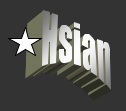"The
award of the Distinguished Flying Cross (is made) to First Lieutenant
James R. Smith, (who) distinguished himself while participating in
aerial flight as Radar Observer from 24 November 1944 to 7 July 1945,
flying both day and night missions. During his night missions, he
intercepted attacking enemy aircraft and strafed and bombed enemy
railroad trains and truck convoys. Flying day fighter missions,
he attacked enemy installations, troop concentrations, lines of
communication and supply dumps, inflicting heavy losses on the
enemy. Fire from hostile aircraft and enemy ground guns were
encountered frequently, but he carried out his mission with aggressive
courage. The outstanding accomplishments of Lieutenant Smith
reflect credit upon himself and upon the Army Air Forces."
____________________________________________________________________________________________
